Congenital malformations and deformations of the musculoskeletal system (Q65-Q79)
Talipes equinovarus (Q66.0)
Combination of forefoot and hind foot in equines (plantar flexed) and in varus (rotated toward the midline). In other words, the foot points downward and inward and is rotated outward axially. Other anomalies of the foot and ankle include talipes calcaneovalgus (in which the ankle joint is dorsiflexed and the forefoot deviated outwards) and talipes calcaneovarus (in which the ankle joint is dorsiflexed and the forefoot deviated inwards).
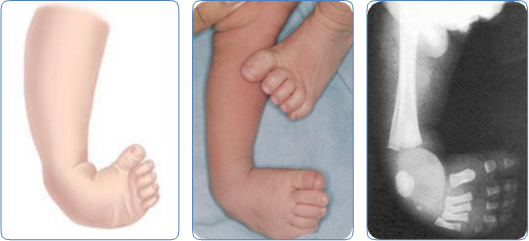
Reduction defects of upper and lower limbs
Congenital complete absence of upper limb(s); amelia of upper limb (Q71.0)
Complete absence of one or both upper limbs.
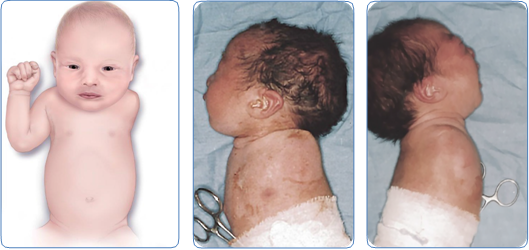
Congenital absence of upper arm and forearm with hand present; phocomelia of upper limb Q71.1)
Complete or partial absence of the upper arm and forearm but with the hand present
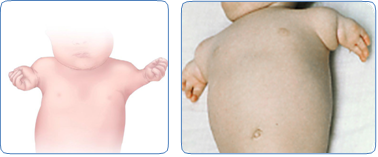
Congenital absence of both forearm and hand (Q71.2)
Complete or partial absence of both the forearm and hand.

Congenital absence of hand and finger(s) (Q71.3)
Complete or partial absence of the hand and finger(s).
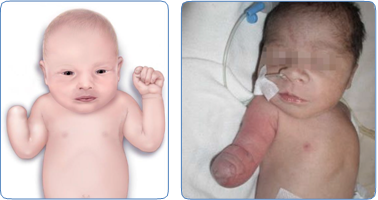
Congenital absence of finger(s) (remainder of hand intact) (Q71.30)
Complete or partial absence of fingers, with the remainder of the hand intact.
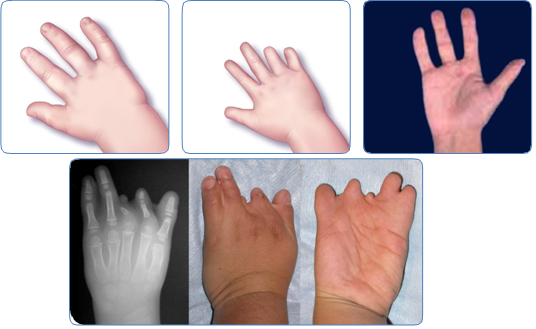
Absence or hypoplasia of thumb (other digits intact) (Q71.31)
Complete or partial absence or hypoplasia of the thumb
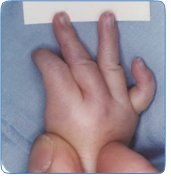
Longitudinal reduction defect of radius: clubhand (congenital), radial clubhand, absence of radius (Q71.4)
Complete or partial radial aplasia/hypoplasia. Usually accompanied by complete or partial absence or hypoplasia of the thumb.
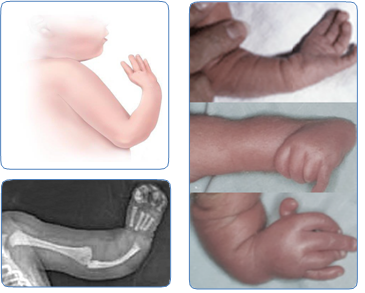
Longitudinal reduction defect of ulna (Q71.5)
Complete or partial absence of the ulna.
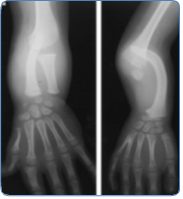
Split hand (congenital cleft hand) (Q71.6)
Complete or partial absence of central fingers and metacarpals. The terms lobster claw and ectrodactyly, used by some, should be discouraged

Congenital complete absence of lower limb(s); amelia of lower limb (Q72.0)
Complete absence of one or both lower limb(s).

Congenital absence of thigh and lower leg with foot present; phocomelia of lower limb (Q72.1)
Complete or partial absence of the thigh and lower leg but with the foot present.
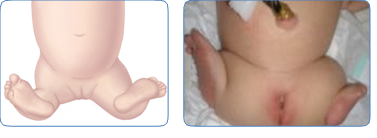
Congenital absence of both lower leg and foot (Q72.2)
Complete or partial absence of both the lower leg and foot.

Congenital absence of foot and toe(s) (Q72.3)
Complete or partial absence of the foot and toe(s).

Congenital absence or hypoplasia of toe(s) with remainder of foot intact (Q72.30)
Complete absence or hypoplasia of toe(s) with the remainder of the foot intact.

Absence or hypoplasia of first toe with other digits present (Q72.31)
Complete absence or hypoplasia of the first (great) toe with other digits present.
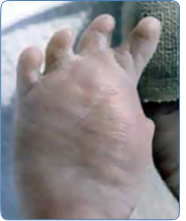
Longitudinal reduction defect of femur (Q72.4)
Complete or partial absence of the femur.
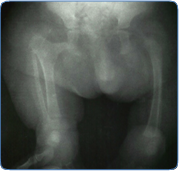
Longitudinal reduction defect of tibia (Q72.5)
Complete or partial absence of the tibia. Usually accompanied by complete or partial absence or hypoplasia of the first (great) toe
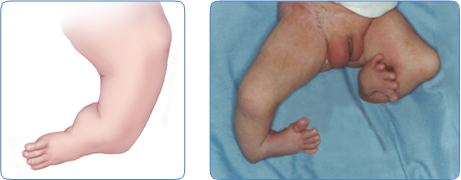
Longitudinal reduction defect of fibula; fibular aplasia/hypoplasia (Q72.6)
Complete or partial absence of the fibula.
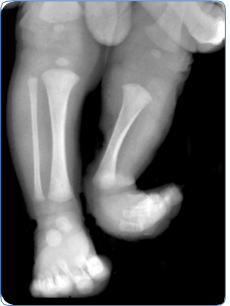
Split foot (congenital cleft foot) (Q72.7)
Complete or partial absence of central toes and metatarsals. The term ectrodactyly, used by some, should be discouraged.
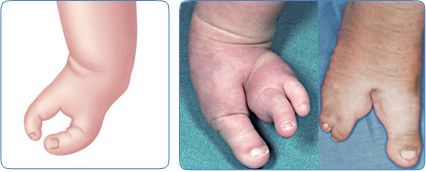
Exomphalos/omphalocele (Q79.2)
Congenital anomaly of the anterior abdominal wall, in which the abdominal contents (gut, but at times also other abdominal organs) are herniated in the midline through an enlarged umbilical ring. The umbilical cord is inserted in the distal part of the membrane covering the anomaly. The herniated organs are covered by a membrane consisting of the peritoneum and amnion (but this membrane can be ruptured).
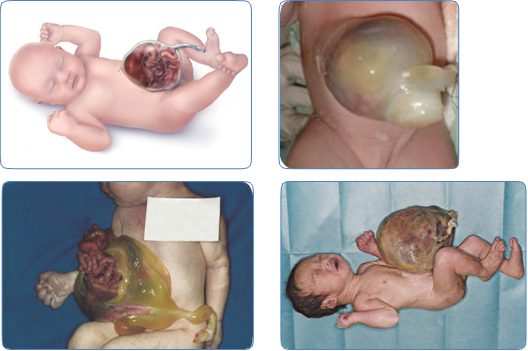
Gastroschisis and omphalocele can be confused with one another when the membrane covering the omphalocele has ruptured. In that case, the location of the abdominal opening is decisive: it is midline in omphalocele, and lateral to the umbilicus in gastroschisis.
Gastroschisis (Q79.3)
Gastroschisis is a congenital anomaly of the anterior abdominal wall, accompanied by herniation of the gut and occasionally other abdominal organs. The opening in the abdominal wall is lateral to the umbilicus, and the herniated organs lack a protective membrane. Note that the extruded abdominal contents can be matted and covered by a thick fibrous material, but this membrane does not resemble skin
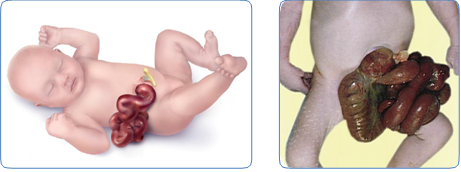
Gastroschisis and omphalocele can be confused with one another when the membrane covering the omphalocele has ruptured. In that case, the location of the abdominal opening is decisive: it is midline in omphalocele, and lateral to the umbilicus in gastroschisis.